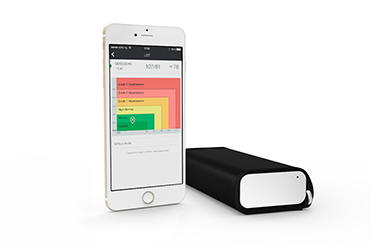Have you noticed your heart is beating too fast even if you are at rest? Normally, your heart rate reflects your activity status, so when you are running or intensively exercising, you heart rate goes up, while meditation and resting results in your heart rate being at its lowest. But those who experience an elevated heart rate even when their activity levels are low are living with tachycardia. Learn what tachycardia means to your health and how to manage it.
Discover more about heart palpitations in our article ”Heart palpitations and what you need to know about them.”
What is tachycardia?
Tachycardia is a heart condition where one’s heart is beating too fast, more than 100 beats per minute when at rest. In general, normal resting heart rate is between 60 and 100 beats per minute while with tachycardia, the heart’s chambers are working too hard and beating faster than is considered healthy.
What happens to the heart with tachycardia?
With tachycardia, the heart beats too quickly, resulting in a heart rate in excess of 100 beats per minute. When the heart beats too fast, it pumps the blood around the body less efficiently and the blood flow is reduced, starving the myocardial cells of oxygen, which could potentially cause heart attack.
What causes tachycardia?
Tachycardia is caused when the electrical signals sent by the heart travel across the heart tissues too fast. The disruption of the normal electrical impulses that regulate the heart rate and pumping rhythm get out of sync and the cause the heart to beat faster. There might be several underlying causes why this might happen including reaction to certain medication, birth defects, alcohol use, hypertension and many others.
What are the symptoms of tachycardia?
There are several symptoms of tachycardia that can indicate the presence of tachycardia including fast or accelerated heart rate, chest pain, dizziness, palpitations or syncope (fainting). However, it is not unusual for some to experience no symptoms at all.
Is tachycardia dangerous?
If gone undetected and untreated, tachycardia can become a life-threatening heart condition than can lead to a heart attack, stroke or even death. If you are frequently experiencing rapid heart rate or measure high resting heart rate, you should request further examination by a medical professional.
What are the treatments for tachycardia?
Tachycardia is usually treated based on the underlying cause. For example, if it’s caused by high blood pressure, treatment to address hypertension might be administered. But in general, tachycardia requires slowing down the elevated heart rate.
Qardio smart health devices make it easy to keep your heart health in check. Sometimes people with tachycardia have no symptoms, and it is only discovered with an ECG/EKG test done by a monitor like QardioCore. QardioCore, our wireless ECG monitor, measures and records more than 20 million heart health data points and can track medical grade ECG/EKG, heart rate variability, activity levels, respiratory rate and many other heart health metrics so you and your doctor can care for your heart anytime, anywhere. Use QardioArm, our smart blood pressure monitor, to measure your blood pressure and look for repeated occurrences of irregular heartbeat during the measurements.
Sources:
Mayo Clinic



